Rich, creamy, and delicious, you can’t beat homemade yogurt! Follow these simple steps to make homemade yogurt without a yogurt maker or any other specials tools (not even a thermometer).

We eat lots of yogurt, and it’s one of my favorite things to make homemade. However, when I first started researching how to make it, I was a little overwhelmed. I like to keep a minimalist kitchen, and I didn’t have (or want) a yogurt maker or any other tools people often use. I didn’t even have a thermometer!
But people have been making yogurt long before electricity was even discovered, so I knew I could make it without any special tools.
Once I figured out how to do it, I realized that it’s actually quite simple! These days I make homemade yogurt without a yogurt maker weekly, and we love eating it with my granola recipe (low-sugar), in smoothies, with fruit, or just plain. My toddler’s favorite way to eat it is with fermented cranberries!
This post contains affiliate links which means I earn a small commission at no extra cost to you. See my full disclosure here.
Why You’ll Love This Recipe
Healthy snack – Full of probiotics, healthy fat, protein, and more, it’s hard to find a better snack!
Delicious flavor – Homemade yogurt is so creamy and has a delicious rich flavor.
Easy recipe – Making homemade yogurt without a yogurt maker is so simple that you can easily add it to your routine.
Kid-friendly snack – Yogurt is a popular healthy food for kids, toddlers, and even babies that are eating solids! It’s one of my go-to foods for my toddler when she’s teething.
Versatile ingredient – Whether you prefer making yogurt bark, yogurt dill sauce, or using it to make super moist muffins (like my apple oat muffins), there are so many delicious ways to eat yogurt!
Does Making Homemade Yogurt Save Money?
Yes! This was a big reason I started making it in the first place.
When you make yogurt, the amount you end up with is only slightly less than the amount of milk you started with. With this in mind, to figure out how much you could save, simply compare the cost of the milk you buy with the cost of yogurt.
As an example, at the time of writing this article, at my local Walmart a gallon of organic whole milk is $6.98 a gallon. A quart of plain organic yogurt costs $4.46, so it would be $17.84 for a gallon. That’s a savings of over $10 a gallon!
What Type of Milk to Use
This recipe is specifically designed for regular whole milk. If it has been processed beyond pasteurization and/or homogenization (such as lactose-free milk), it will not work as well for yogurt.
Also, this recipe is not designed for dairy-free milks. However, I have another recipe for dairy-free coconut yogurt.
If you would like to make yogurt using goat milk, check out my goat yogurt recipe.
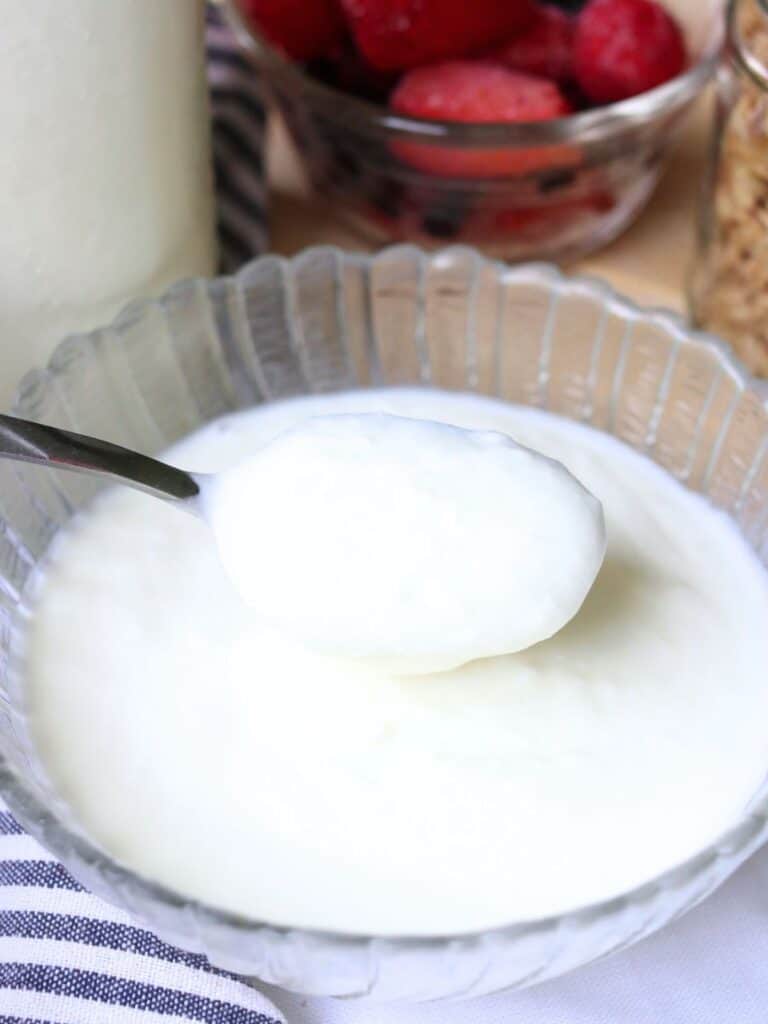
Yogurt Starter Options
When making homemade yogurt you have three starter options, all of which have pros and cons.
Store-Bought Yogurt
You can use a small amount of plain store-bought yogurt to start your batch of homemade yogurt. If you do, make sure that it has no additives, sweeteners, or flavors and contains live active cultures.
Pros:
- Easily obtained (you may already have some in your fridge)
- Doesn’t require you to maintain a starter
Cons:
- You have to purchase more for each batch you want to make. If you start your homemade yogurt with store-bought yogurt, you cannot use your homemade yogurt to start your next batch. It may seem to work, but the results will be unpredictable and get increasingly worse as time goes on.
- Various factors outside of your control (or knowledge) can determine how many live active cultures are actually in the starter yogurt. This can lead to unpredictable results.
Commercial Yogurt Starter
This is another popular method for making yogurt. You can often buy commercial yogurt starters at health food stores or online. Cultures for Health is my favorite brand for a reliable commercial starter.
Pros:
- There’s no need to check the ingredients for additives that may be in store-bought yogurt.
- You don’t need to worry if there are any live active cultures.
- Consistent results (if you are using the same ingredients and technique every time)
Cons:
- Using a commercial yogurt starter is the most expensive option for starting homemade yogurt.
- You have to purchase more for each batch of homemade yogurt you make.
Heirloom Yogurt Starter
This is my favorite type of yogurt starter! Cultures for Health has an heirloom Bulgarian starter that I use to start my yogurt, and I highly recommend it.
Pros:
- Lasts indefinitely. You can use each batch of homemade yogurt to start the next batch, and there’s no need to purchase more starter. If you want to be self-sufficient in your yogurt-making, heirloom starters are the way to go!
- Most affordable option to start yogurt. Since you never need to buy more starter, this is by far the cheapest method.
Cons:
- Requires upkeep of your starter. In order to keep making batch after batch of yogurt without buying a new starter, you have to make sure the yogurt is properly stored and not contaminated or you’ll ruin the starter. (A good tip for this is to as soon as your current batch of yogurt is done, pull out enough to start the next batch and store it separately from the rest of the yogurt.)
- You will need to make yogurt at least once a week in order to maintain the freshness of the starter. (There are a few tricks if you have to skip a week or two, but they can be unreliable.)
- Can lead to unreliable results if your starter gets contaminated or old.
Tips for Thick Yogurt
This homemade yogurt doesn’t have any thickeners that are often in store-bought yogurt, so it will naturally be slightly runnier. However, there are a few things you can do to help your yogurt thicken.
Try another starter – Different yogurt starters will make a difference in how yogurt thickens. You can try different brands of yogurt to use as a starter, use a commercial starter, or buy an heirloom starter. Do not try mixing starters as this can upset the bacteria balance and even create yogurt that is dangerous to eat.
Increase fat content – Milk with higher amounts of fat will make thicker yogurt. Because of this, whole milk is a better choice than 2% or skim milk.
If you want your yogurt even thicker, you can also add heavy cream to your milk. Keep in mind that heavy cream will not sustain an heirloom starter culture as well as whole milk, so every few batches you will need to just use whole milk.
Heat milk longer – Holding the milk at approximately 180 degrees for 30 minutes will denature the proteins and help the yogurt to thicken.
Strain the yogurt – Another way to thicken yogurt is to strain off the whey using a cheesecloth. If you use this method, don’t throw out the whey! There are many wonderful uses for it.
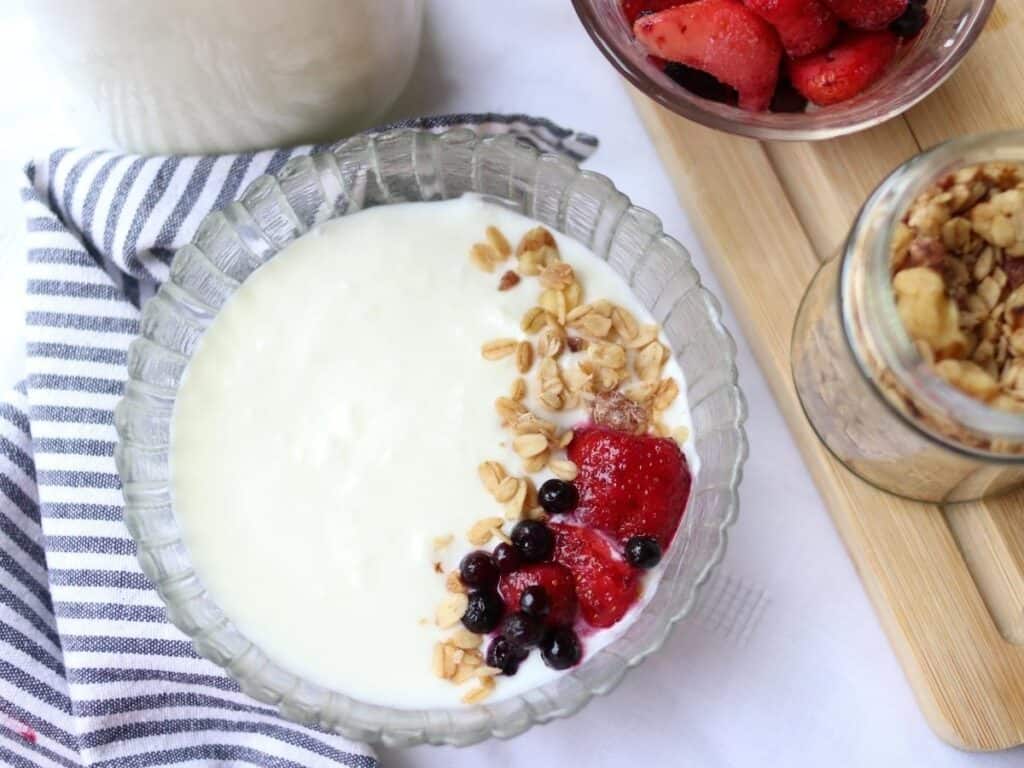
How to Store
Homemade yogurt will keep for about two weeks in the fridge.
However, if you started your yogurt with an heirloom starter, you will need to make your next batch within one week for best results.
Can I Freeze Homemade Yogurt?
Yes, you can freeze yogurt, but it won’t have a good texture once it’s thawed. If you freeze it, it’s best to eat it still frozen (like frozen yogurt bark).
Also, keep in mind that freezing can impact the active cultures in it. While it won’t necessarily kill them all immediately, they will become dormant and decrease the longer the yogurt is frozen.
FAQs
Yes, just like other fermented foods, making yogurt is a safe process. If it smells good, tastes pleasantly sour, and has thickened at least slightly, it should be safe to eat.
Yes, the fermentation time for yogurt can be adjusted slightly based on your preference. Most people prefer the flavor between 8 and 12 hours, but others let it ferment for up to 24 hours!
This is often caused by fermenting slightly too hot or for too long. It can also be caused by heating the milk too quickly. You can simply whisk the lumps into the yogurt. It’s still safe to eat.
This is whey, and it’s a natural byproduct of making yogurt. I whisk it into my yogurt, but you can also strain it out with a cheesecloth. Excessive amounts of whey are often caused by jostling the yogurt before it’s set or fermenting it too hot or too long.
First, since this homemade yogurt has no thickeners like most store-bought yogurt does, it will naturally be runnier. It should, however, still be thicker than milk. If it’s still very much a liquid, try letting it ferment for at least 12 hours and then check again. If it still hasn’t set, most likely either your starter didn’t have enough active cultures or you didn’t ferment it at a high enough temperature.
Violet’s Tips for Serving
Yogurt makes delicious breakfast parfaits with low-sugar granola and frozen berries! You can also add it to smoothies for a delicious protein and probiotic boost.
Tools You May Need
This post contains affiliate links which means I earn a small commission at no extra cost to you. See my full disclosure here.

Ingredients
- Store-bought yogurt with active cultures that doesn’t have any flavorings or sweeteners.
- Homemade yogurt from your previous batch. Make sure that it’s not older than a week! Also, if you started your first batch from store-bought yogurt, you will likely only be able use your homemade yogurt as a starter for a few batches before it stops working.
- Powdered commercial or heirloom starter. Commercial starters are for one-time use. However, heirloom cultures will allow you to continue using each batch of yogurt to start the next indefinitely.
Step-By-Step Instructions
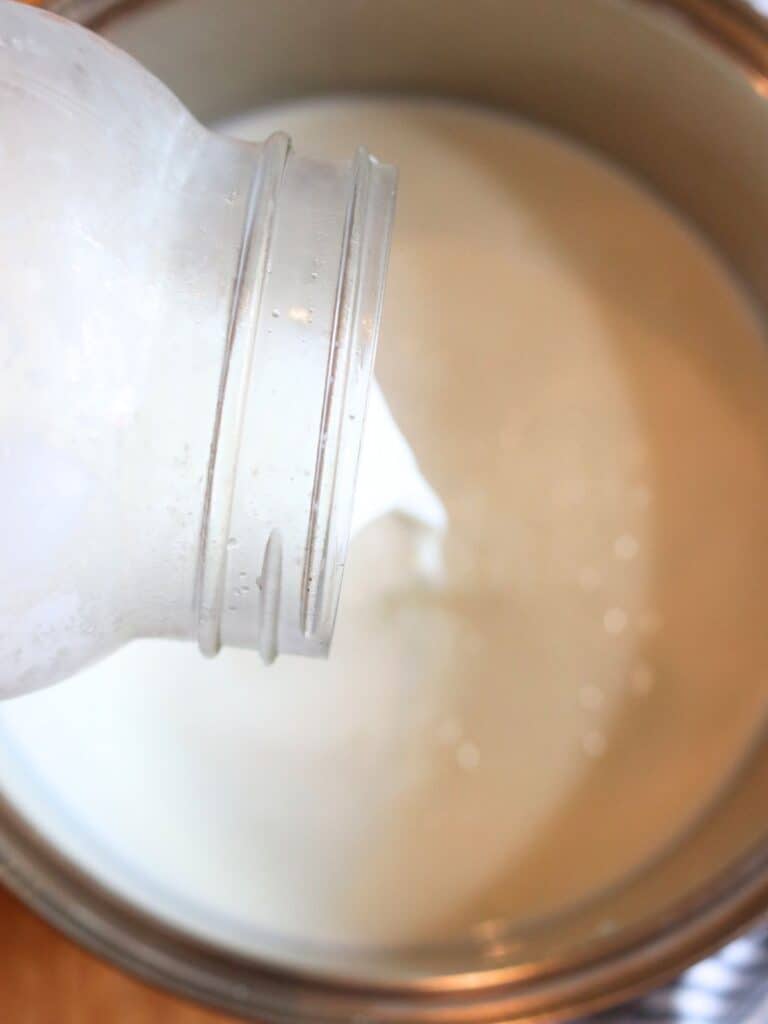
Step 1: First, preheat your oven to 180 degrees.
Then, pour the milk into a pot and heat slowly on the stovetop on medium-low heat, stirring frequently. Once it gets close to boiling and bubbles begin to form around the edges (180 degrees if you’re using a thermometer), place it in the oven for 30 minutes.
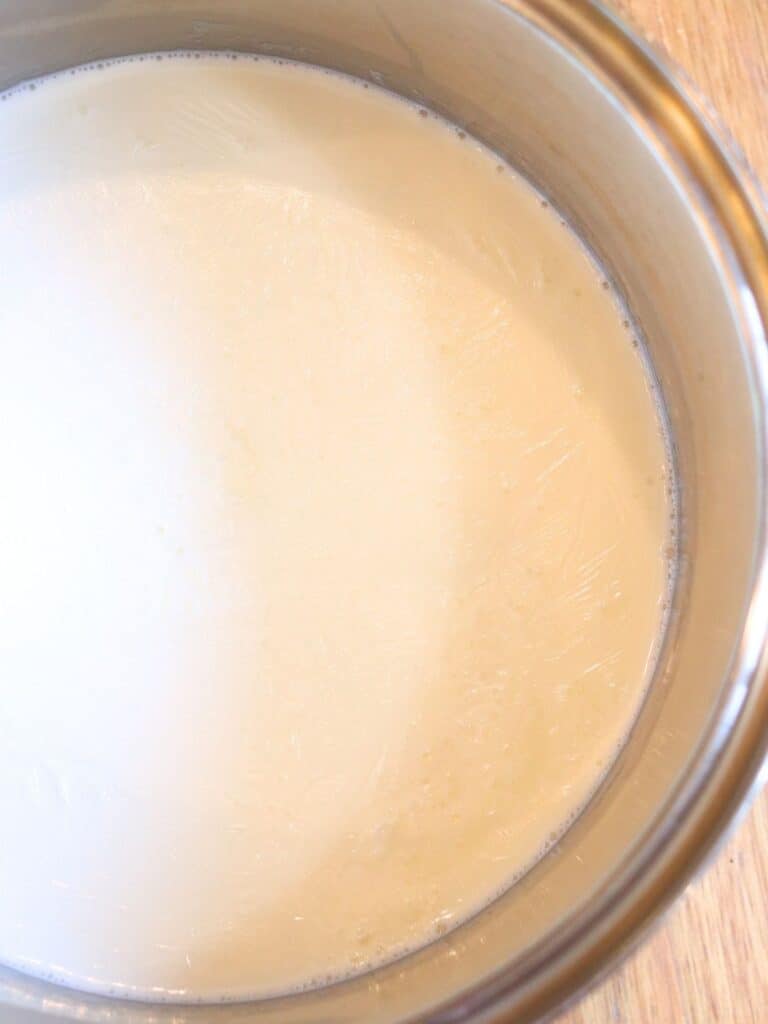
Step 2: After 30 minutes, turn off the oven and leave the door ajar so it can cool.
If you are using yogurt as a starter, go ahead and remove it from the fridge so it can come to room temperature.
Remove the hot milk from the oven and let it cool without stirring until you can move your finger back and forth 10 times without getting burnt (it will still be pretty hot). This should be about 110 degrees.
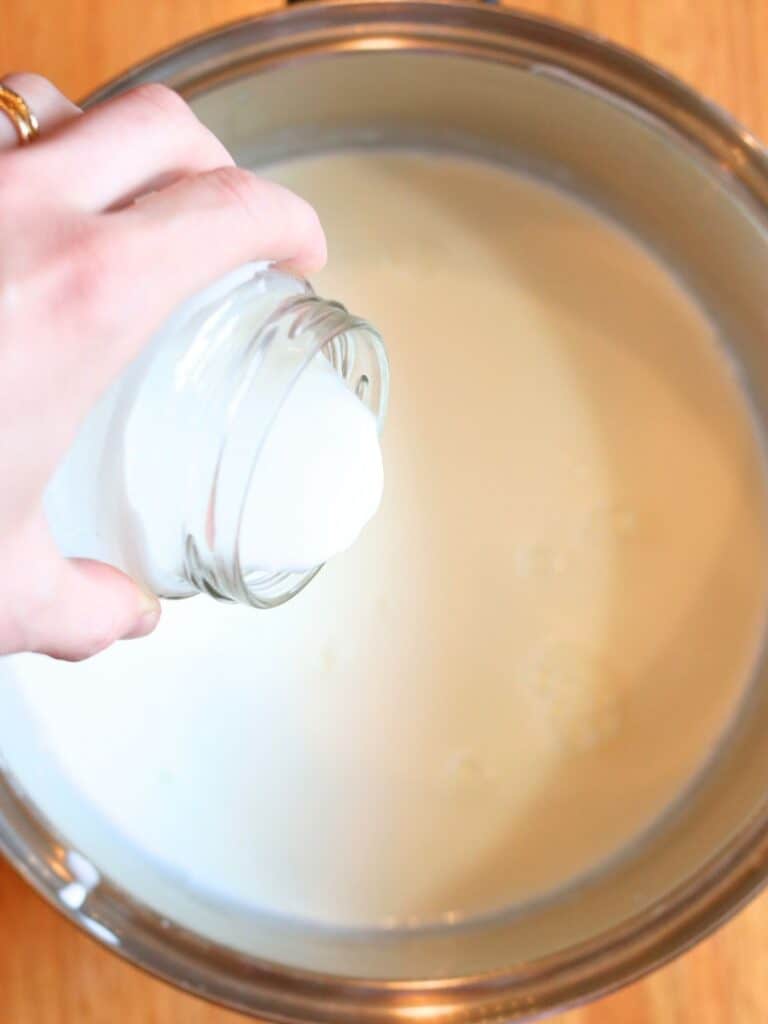
Step 3: Next stir in the room-temperature yogurt starter.
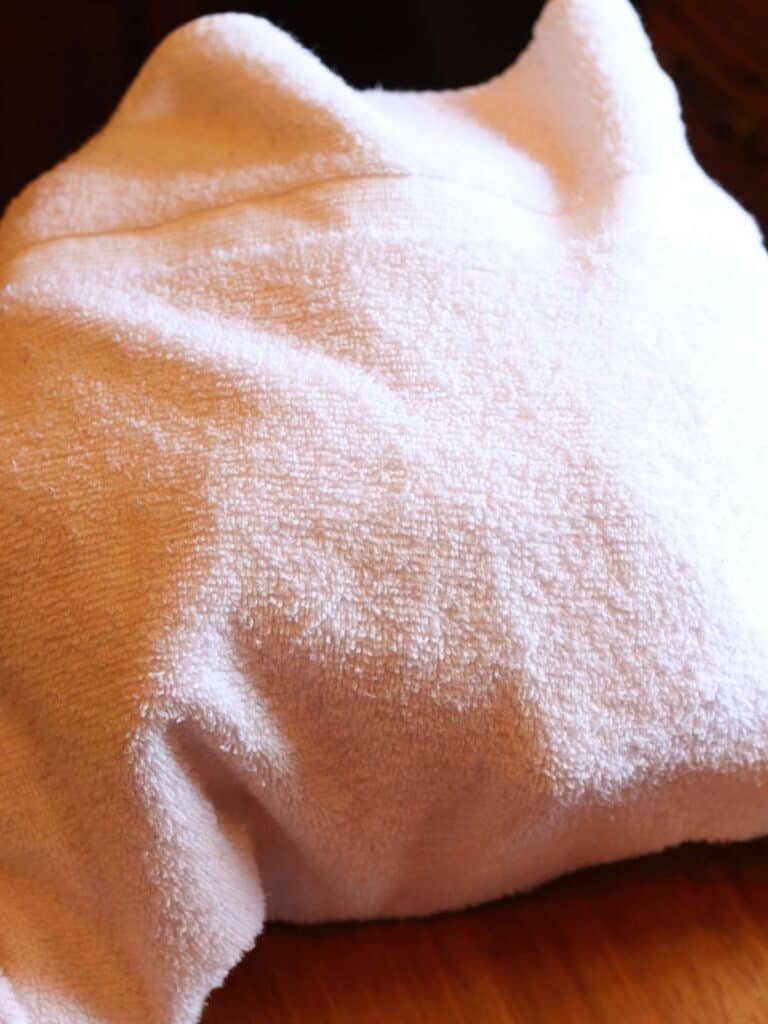
Step 4: Then, place the lid on the pot and wrap it in a large towel to help it stay insulated.
Put the pot of yogurt wrapped in the towel inside the oven, and turn on the oven light. Then let it ferment undisturbed for approximately 8-12 hours.

Step 5: Once the yogurt is does fermenting, remove it from the oven. There may be some liquid whey in the pot along with the yogurt, so whisk it into the yogurt until it’s smooth.
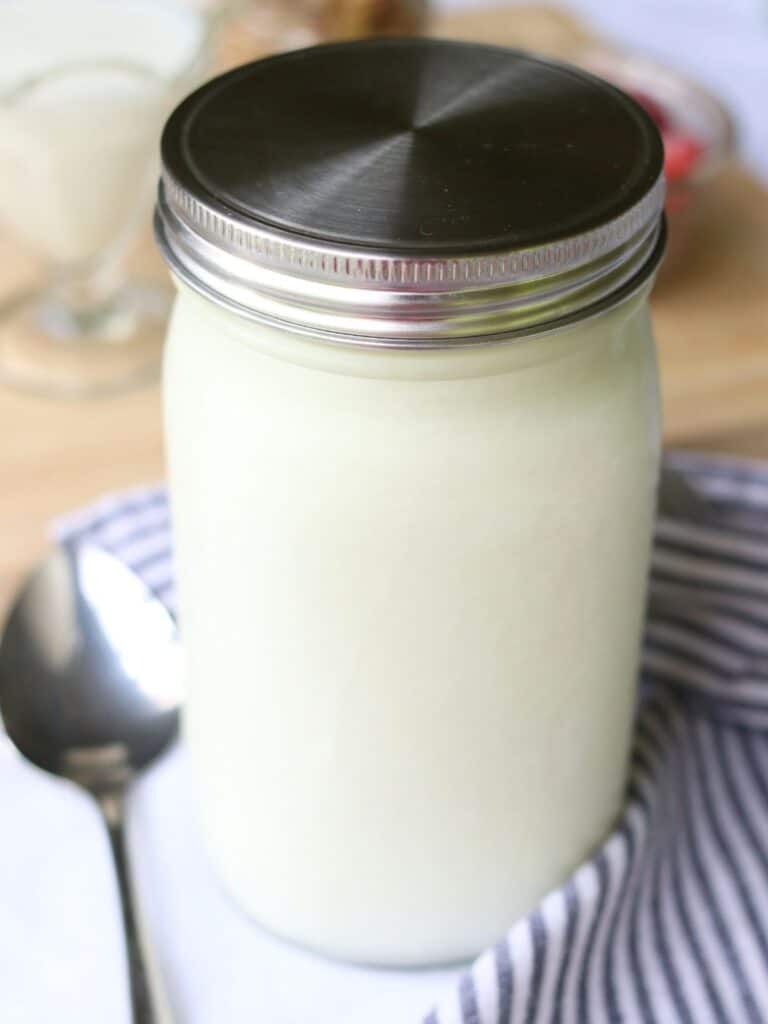
Step 6: Place the yogurt in an airtight container (such as a mason jar) in the fridge. As it sits in the fridge it will continue to thicken slightly for the first number of hours.
Enjoy your rich and creamy homemade yogurt!
If you try this recipe, let me know in the comments! Tag me on Instagram @violet_rightathome
More Clean Eating Breakfast Recipes
Gluten-Free Blueberry Cheesecake German Pancakes

Homemade Yogurt
Ingredients
- 1/2 gallon milk
- 1/4 cup yogurt or powdered starter
Instructions
- Preheat your oven to 180 degrees.
- Pour the milk into a pot and heat slowly on the stovetop on medium-low heat, stirring frequently.
- Once it gets close to boiling, place it in the oven for 30 minutes.
- Turn off the oven, leaving the door ajar so it can cool.
- If you are using yogurt as a starter, remove it from the fridge so it can come to room temperature.
- Remove the hot milk from the oven, and let it cool without stirring until you can move your finger back and forth 10 times without getting burnt (it will still be pretty hot).
- Once the milk has cooled enough, stir in the room-temperature yogurt starter.
- Place the lid on the pot and wrap it in a large towel.
- Put the pot in the oven and turn on the oven light.
- Let the yogurt ferment undisturbed for approximately 8-12 hours.
- Remove the yogurt from the oven.
- There will likely be some liquid whey in the pot along with the yogurt, so whisk it together until it's smooth.
- Place the yogurt in an airtight container in the fridge. As it sits in the fridge it will continue to thicken slightly for the first number of hours.
Notes
Homemade yogurt starter options:
- Store-bought yogurt with active cultures that doesn’t have any flavorings or sweeteners.
- Homemade yogurt from your previous batch. Make sure that it’s not older than a week! Also, if you started your first batch from store-bought yogurt, you will likely only be able use your homemade yogurt as a starter for a few batches before it stops working.
- Powdered commercial or heirloom starter. Commercial starters are for one-time use. However, heirloom cultures will allow you to continue using each batch of yogurt to start the next indefinitely.
Nutrition
If you love this recipe for yogurt, please make sure to come back and leave a comment and a 5 star rating. I’d love to hear how it turned out for you!
Also, I’d love to have you part of the Right At Home community! Make sure to join my newsletter for all the latest clean eating recipes and clean living tips and DIYs.


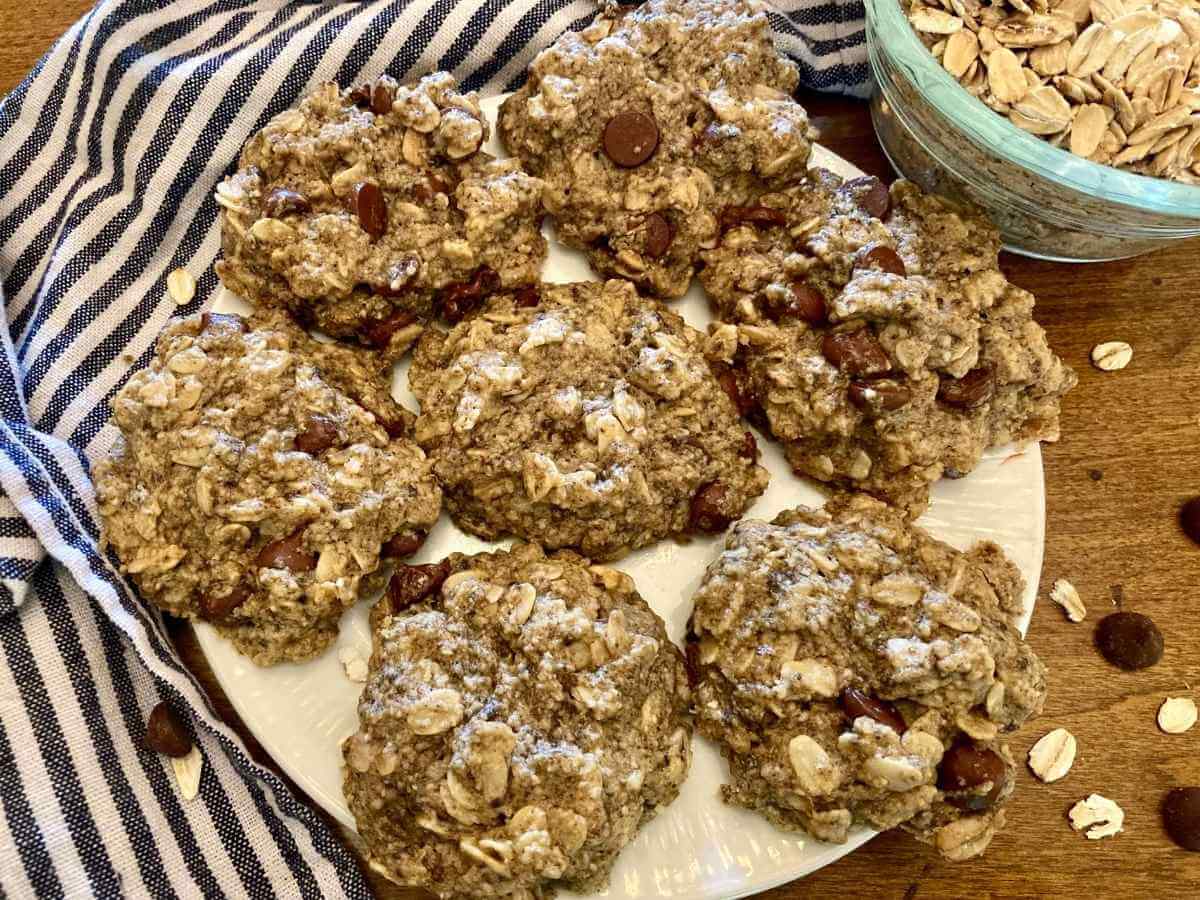
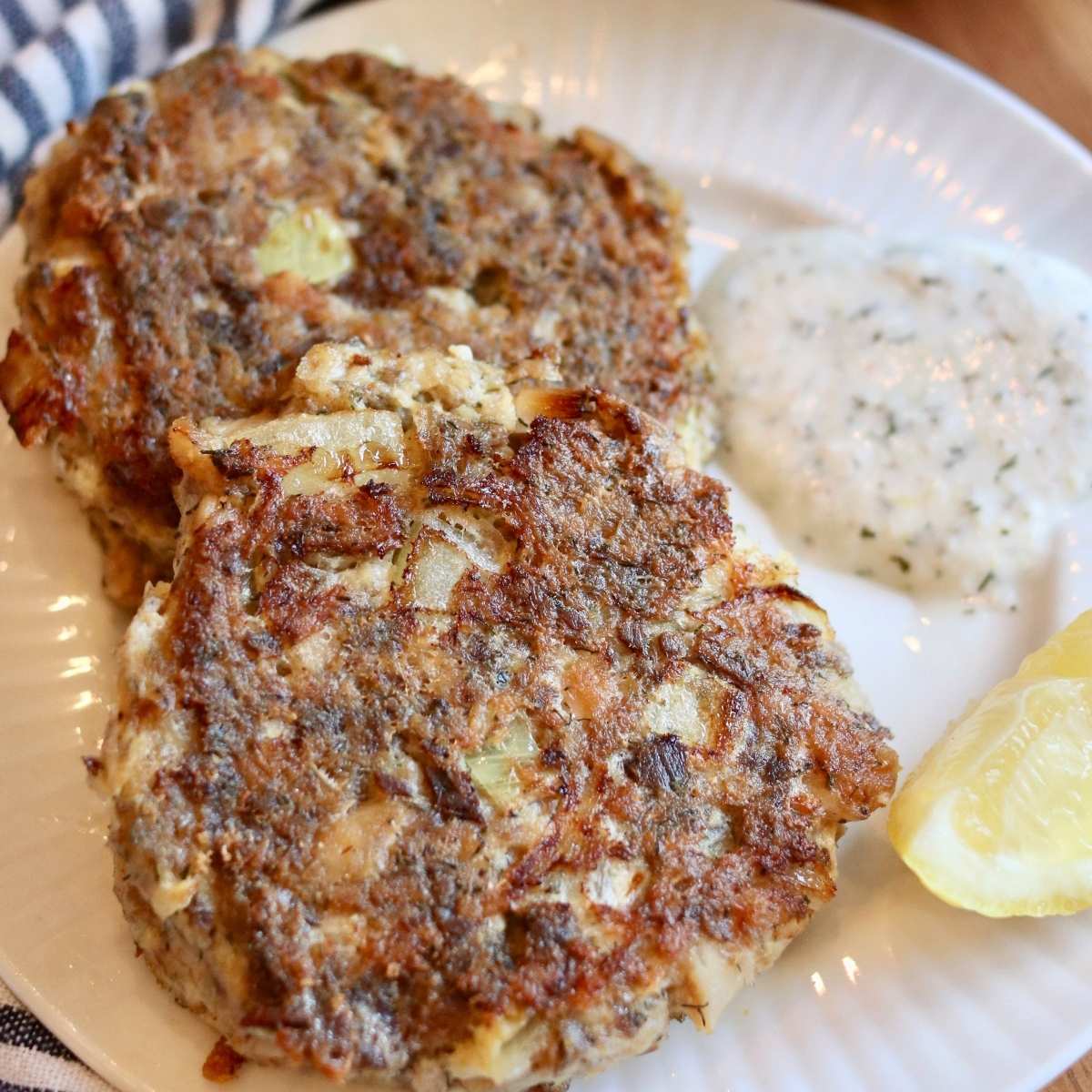




My whole family loves this yogurt! I usually have to make a gallon a week!
Can you put canned fruit in yogurt and when should you add it?
Canned fruit is delicious in yogurt! If you’re planning to use some of your current batch of yogurt to start the next batch, make sure to pull some out to save as a starter before adding the fruit. Otherwise, you can add the fruit as soon as the yogurt is done fermenting.